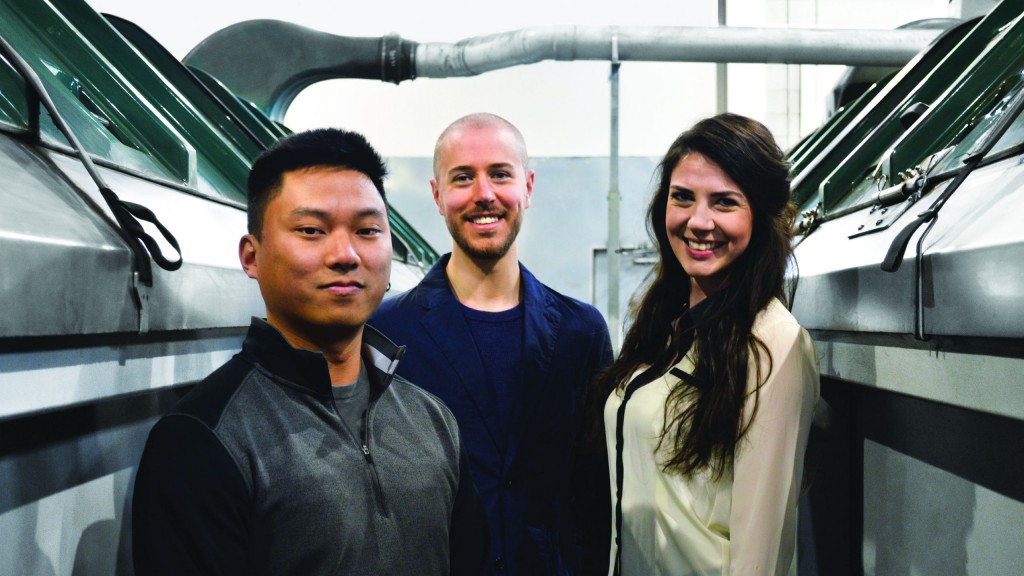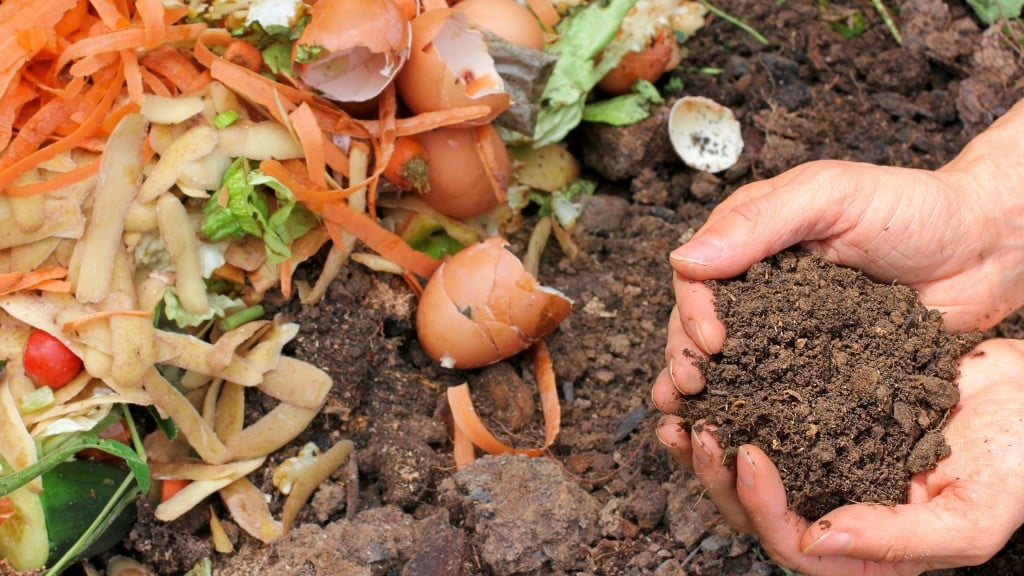Inner-city composting
Hop Compost is using in-vessel technology to bring their “craft” organic compost method closer to the source

Hop Compost built their first composting operation in Calgary in 2015. According to Kevin Davies, founder and CEO, due to their location in the city, at 17A Street, theirs is currently the most inner-city compost facility in Canada.
This inner-city concept - positioning a small-footprint, high-efficiency in-vessel composting operation within an urban environment, close to the source of commercial food and other organic waste - is one that Davies feels will very likely catch on.
"Composting is ripe for disruption with automation and technology," says Davies. "At a high level, I think that composting in North America relies on very historical production methods that weren't intended to scale."
He says Canada has seen the failure of several centralized facilities, often due to odour or quality issues that arise when agrarian methods are stretched to an industrial size.
"At Hop Compost, we believe that composting should be decentralized, using small and hyper-efficient processing facilities, which makes it not only safer, but actually more competitive."
Davies says their original inner-city composting site in Calgary, similar to their second site in Vancouver, and their third site, currently under construction in Toronto, is only about 10,000 square feet in size, but has the capacity to process about 2,000 tons of certified-organic compost per year.
"This is a very efficient footprint," he says. "We cut about 75 percent of the processing space that's typically required for composting."
In addition, because their sites are located close to the source of their material - all from commercial customers, mainly in the retail food industry - Hop Compost can provide low-cost, customized collection and hauling of organic waste, and offer a truly closed-loop service.
The HotRot System
"We use HotRot in-vessel technology to develop our inner-city compost facilities," says Davies. "Hop converts commercial waste into what is - to the extent that we're aware - the most nutrient-rich organic compost in the country."
HotRot technology provides a fully sealed vessel. Inside the vessel, there are data nodes every two metres that track every live condition. The system uses software that responds to those live conditions and can adjust to allow for ideal microbiological activity.
Davies says by using their HotRot system, every minute of production is automated, so they achieve a very high degree of control over the composting process, including odours. And the system is methane- and leachate-free.
"The degree of control that Hop has over its input and output is unique," continues Davies. "As are the software and diagnostics on the system, the variety of data it collects, our ability to see data online and offline, and its automated controls.
"With many systems, you would set a standardized cycle and let it go. With the HotRot system, it is able to adjust its settings as it goes, based on live conditions, such as the turning on or off of exhaust fans or air injection at different periods based on oxygen demand. Our system can track this based on CO2 levels.
"Another advantage of HotRot technology is that it's completely modular," he adds. "In the future, we're going to be able to grow our facilities beyond their 2,000-ton annual capacities by simply plugging new vessels into the existing system."
Customized Collection, Close to the Source
Hop Compost sources food and other organic waste only from commercial customers, largely from the retail food sector. Over the past several years, they have built partnerships with large food industry companies including Starbucks, Hyatt hotels and Earl's Restaurants, to name a few.
"By virtue of bringing composting facilities from rural areas to areas that are near the actual sources of waste - the city - we're able to develop a much more competitive hauling service, which is attractive to a range of commercial customers," says Davies.
He says if they look at Ontario as an example, where food waste is often hauled for up to an hour and a half, before it reaches a processing facility, creating up to three-hour round trips, a hauling service is just inefficient. "This means that composting as potential diversion method just isn't economic or isn't attractive for adoption in a market without a mandate. But as soon as you eliminate the need for that rural trip, you cut fuel and labour costs, and eliminate the need for a compaction vehicle. Composting becomes not only feasible, but attractive."
Hop Compost operates a fleet of cube vans for collection and hauling from customers in the cities where they operate. They provide a bin-swap program, by which they swap out every full bin collected for a clean, empty bin.
"For the clients, this is important because it enables them to have a much cleaner service than they'd get with a dumpster, which can oftentimes attract pests and create odour," says Davies. "By collecting with our bin-swap method, we can also pass every bin that we collect over a floor scale, which is accurate to a tenth of a kilogram.
"We then have very accurate impact reporting, which enables our clients to transparently market their sustainability. Instead of just saying ‘we compost' they can say ‘This month, we took the equivalent of 3,016 cars off the road by virtue of our composting.'"
Craft Composting
For Davies, another very important element to their operations is their ability to work with ingredient pairings.
"The microbiology in composting is very sensitive to moisture levels, temperature and acidity," says Davies. "These are all variables that can be controlled."
Each bin Hop Compost collects is labelled at its source and when it comes to their facility, is categorized based on the type of waste.
"This enables us to protect against things like loading citrus content into our machinery, which can decimate the microbial population because of its acidity," he says. "It also enables us to pair-off different categories of ingredients that harmonize so we can have a balanced input of, for example, meat scraps with produce content.
"I see this as the advent of ‘craft composting,'" continues Davies. "Having true ingredient control by controlling our waste, and by virtue of having labelled waste sources, Hop has a balanced recipe for a high-quality compost product."
He adds that compost historically has been challenged by a lack of quality control. "If you don't know the ingredients and if your process is determined by the weather, it's difficult to consistently validate a product as being high quality. In particular, I think it's difficult to produce a quality that's consistent enough for a retail environment.
"Hop has focused on environmental control within our vessels in order to produce a much more consistent compost."
Davies notes that in 2017, they achieved an important milestone: their product was OMRI-listed for certified organic use in Canada.
"In order to achieve this, our product passed through a variety of lab standards for pathogen content, pesticide and herbicide residuals, and it was found to be clean enough for organic use," says Davies, who adds that in comparison to traditional methods, they produce in small, but continuous batches.
"This enables us to have more consistent microbial population, and it also enables material to be processed faster."
When material arrives at Hop Compost's site, they load their hopper with an entire recipe full of food scraps and wood chips, which effectively gives the carbon/nitrogen balance required.
"As opposed to then slamming that entire content into the machinery at once, which would overwhelm it and restart the composting, it is produced in a small-batch process," explains Davies, adding that with their method, only a small trickle of material goes in every hour of the day, and loads are typically divided over roughly a 24-hour process, continuously.
"That way, we have a small amount of new feedstock entering into a hyperactive microbial environment that just builds and builds with time," he says. "This enables us to have a higher degree of control over the composting process and avoid contamination from plastic or glass residuals."
A Bright Future for Organic Waste
For Davies, organic waste is an incredibly high-opportunity market.
"The way that we see it, right now compostable waste is taking up about a third of the average landfill," he says. "What we've seen is that progressive municipalities like Calgary and Vancouver, while they have introduced their own municipal services for residential waste, are mandating the adoption of private services for commercial waste. We believe that mandates like those in Vancouver and Calgary are going to continue. We've seen them come up in other markets, like Massachusetts, and New York is introducing an organics ban. Having this kind of regulatory support for private adoption is going to boon the industry.
"I think what we're eventually going to see is that we'll no longer have one in every three pounds entering a landfill being compostable material. I think that will dramatically diminish.
"So in that sense, I think that $1 in every $3 that are being spent on garbage hauling right now will transition into organics hauling.
"That's what makes the industry so exciting to be in."


